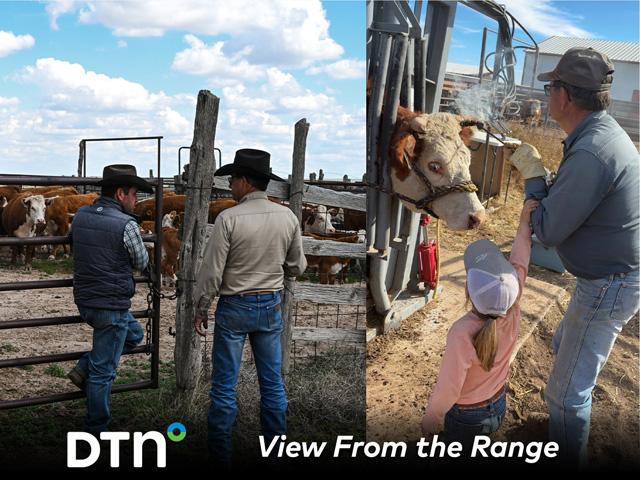Cash Market Moves
Instant Replay or Worse? Lower Mississippi Water Levels May Hit New Low
Watching Mississippi River levels fall and saltwater intrude upriver from the Gulf of Mexico right now is like an instant replay of last fall. Except it is happening much sooner than last year.
On Oct. 11, 2022, the USACE started building a sill at river mile 64, which is near Myrtle Grove, Louisiana, to stop the saltwater from moving upriver. According to the Corps, that was the fourth time in 2022 it was necessary to build a preventative sill. So far in 2023, the Corps built a sill in early July at the same spot and are now in the process of building a second sill after the July underwater sill was overtopped Sept. 20, 2023.
"The U.S. Army Corps of Engineers, New Orleans District, is working to delay upriver progression of saltwater from the Gulf of Mexico by augmenting the sill initially constructed in July 2023," the USACE noted on their website. "Construction is underway to increase the existing underwater sill from a depth of -55 feet to a depth of -30 feet. A 620-foot-wide navigation lane will be kept to a depth of -55 feet to ensure deep-draft shipping continues along the nation's busiest inland waterway."
"As a result of continued falling conditions, this existing sill was overtopped and the toe of the saltwater wedge has reached River Mile 69, near the community of Jesuit Bend," said Col. Cullen Jones, USACE New Orleans District commander. "Our modeling indicates that by augmenting the existing sill, we can support state and local preparedness and response efforts by delaying further upriver progression of the saltwater by approximately 10 to 15 days."
For reference, the Corps notes "intrusion of saltwater into the river is a naturally occurring periodic condition because the bottom of the riverbed between Natchez, Mississippi, and the Gulf of Mexico is below sea level. Denser saltwater moves upriver along the bottom of the river beneath the less-dense freshwater flowing downstream. Under normal conditions, the downstream flow of the river prevents significant upriver progression of the saltwater. However, in times of extreme low-volume water flow, unimpeded saltwater can travel upriver and threaten municipal drinking water and industrial water supplies."
Here is a link to my recent column about the saltwater wedge threatening water supplies in Louisianna: "Federal Emergency Declared as Low Water in Mississippi River Causes Saltwater Breach in Louisiana" https://www.dtnpf.com/…
P[L1] D[0x0] M[300x250] OOP[F] ADUNIT[] T[]
As of Sept. 28, the Mississippi River at Memphis is hovering above the record of -10.81 foot we saw on Oct. 21, 2022. Safety restrictions are in place to prevent barges from grounding due to low water, but there have still been reports of groundings and dredges are busy at work to keep the channels open for barges to pass safely.
"Loading drafts are reduced to 28% northbound (NBD) Gulf to Cairo; 24% reduction southbound (SBD) Cairo to Gulf. (Approximate reduction of 400-600 Tons per barge NBD and 400-500 Tons per barge SBD). Ohio River SBD loading drafts reduced by approximately 12% or 200 tons per barge," noted American Commercial Barge Line in their Thursday River conditions update on their website. "Tow size is limited to five-widths from Cairo to Lake Providence (LM 485), reflecting a 17-38% or 5-15 barge reduction in tow size pending horsepower class. Tow size has been reduced to 4-widths Saint Louis to Cairo, a 5-barge or 20% reduction."
In other words, as Executive Director Soy Transportation Coalition Mike Steenhoek explained it in a webinar Thursday sponsored by the United Soybean Board and the American Soybean Association, "Imagine a six-lane highway suddenly becoming a three-lane highway. It's the same scenario on the river when tow sizes are cut."
Because of the extremely low water conditions in Memphis and low water in much of the Lower Mississippi River, the cost of barge freight has been climbing most of September. Ceres Consulting, LLC, noted Thursday, "Freight started out this week 600-800 (percentage) points higher than last Friday, Sept. 22. Each day we've seen the offers drop by 200 points a day depending on the area. Shippers seem to be in a good position with what they have on the books already. Boats have been stacked up due to closures and now starting to see where timings will be departing the Gulf with the empties that have been building up."
As an example of how high barge freight still is, offers next week in the Cairo-to-Memphis corridor were quoted Thursday at 1500% over tariff. If you take the offer quoted of 1500% and use the benchmark rate of $3.14 for the Cairo-Memphis corridor, the cost would be $47.10 per short ton. Then divide that cost per ton by 2,000 (one short ton is equal to ,2000 pounds) and multiply by 56 pounds for corn, the cost is $1.32 per bushel and $1.41 per bushel for soybeans (60 pounds.) Consequently, the river basis has been tumbling.
"Higher transportation costs cause lower basis and in turn, cut farmers' profits," said Steenhoek. "Farmers may have to truck their soybeans to a crush facility farther away if the river terminal can't load out or has a deeply discounted basis. The southern farmers have no options: it's either deliver to the river or deliver to the river."
So, to answer my question, instant replay or worse, I would have to say we are living with both: an instant replay of last fall that is considerably worse than last year.
Mississippi River hydrograph at Vicksburg: https://water.weather.gov/…
Mississippi River hydrograph at Memphis: https://water.weather.gov/…
Saltwater Wedge tracking by USACE: https://www.mvn.usace.army.mil/…
Link to benchmark rates at different points on the river: https://www.ams.usda.gov/…
Mary Kennedy can be reached at Mary.Kennedy@dtn.com
Follow her on X, formerly Twitter, @MaryCKenn
(c) Copyright 2023 DTN, LLC. All rights reserved.




